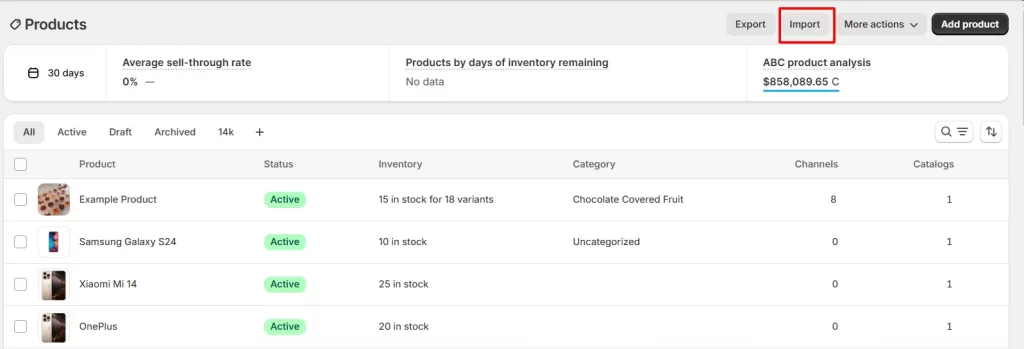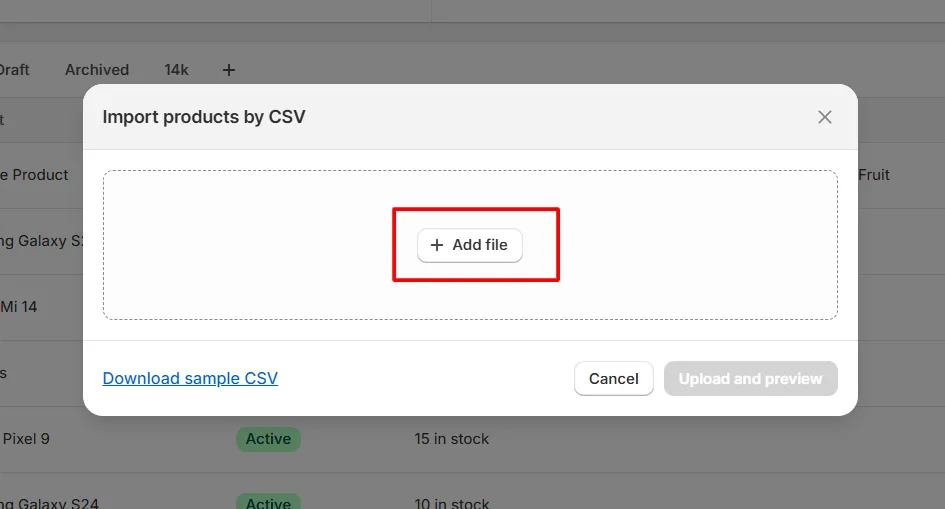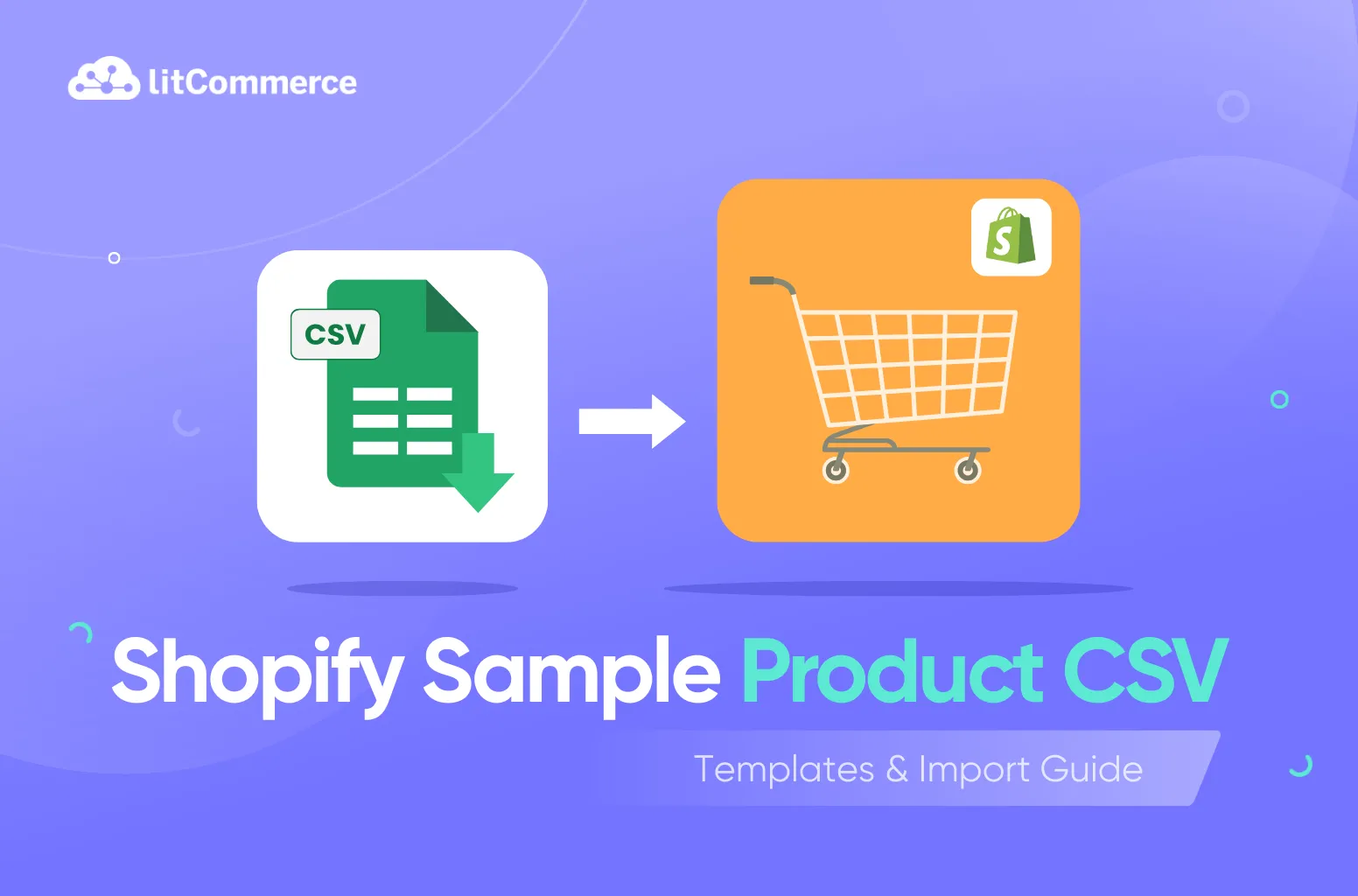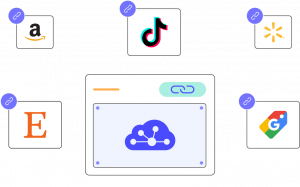Looking for a fast way to get your products onto Shopify by using a Shopify sample products CSV? You’re in the right place. We understand that uploading products one by one is a total time-suck and a lot of work. You need something simpler and more efficient, but maybe you’re not sure how to kick things off with a CSV file.
That’s why we’ve put together templates for top niches and given you a detailed guide on using CSVs in Shopify. Plus, for all you beginners, we’ll dive into common errors and give you some troubleshooting tips. By the time you finish this article, we’re sure you’ll be able to get your Shopify store up and running in just a few minutes.
What is Shopify Product CSV Format?
The Shopify product CSV format is a structured file that helps you import products into Shopify or export them to update information in bulk. It uses a CSV (Comma-Separated Values) file, where each product attribute is stored in a separate column.
This is especially useful when managing a large catalog or transferring product data between Shopify and other platforms. Instead of adding products one by one, the CSV format lets you handle hundreds of listings at once.

A standard Shopify sample products CSV includes key columns like:
- Handle: The unique identifier for each product, also used in the product URL.
- Title: The name displayed in your store.
- Body (HTML): The detailed product description (supports basic HTML).
- Vendor: The brand or manufacturer name.
- Product Category / Type: Defines the product’s category for organization.
- Tags: Keywords that help customers find your product.
- Published: Indicates whether the product is live in your store.
- Option1 Name / Option1 Value: Used for variants like Size or Color.
- Variant SKU, Price, and Inventory Qty: Manage product variations and stock levels.
- Image Src: The image URL used to display product images.
Each row represents a product or variant, while columns define the product details. Shopify automatically reads this structure and creates or updates listings based on the headers.
What’s more, if multiple rows share the same Handle, Shopify recognizes them as variants of a single product.
In addition to Shopify, we also offer guidance and CSV files for importing products to WooCommerce and eBay:
Free Shopify Sample Products CSV Templates (by Niche)
Shopify already offers a sample product CSV file here. But, this template often needs some adjustments to fit specific niches.
To make things easier, we’ve got a bunch of ready-to-use Shopify sample products CSV templates you can instantly apply to various niches, including:
1. Fashion
2. Jewelry
3. Beauty & skincare
4. Home & kitchen
5. Health & wellness
6. Accessories
7. Pet supplies
These templates’ structure follows Shopify’s standard CSV format. And, each niche template already includes realistic sample data for that category, so you can easily see how to structure your own listings.
How to Use the Sample CSV to Import Products
Now that you have the Shopify sample products CSV template, the next step is to modify it and upload it to your Shopify store. Here’s the guide:
Step 1: Download the CSV template
First, get the Shopify sample products CSV file that fits your niche. It includes the correct column headers and sample data you can replace with your own.
Step 2: Replace sample data with your own
Open the CSV file in Google Sheets, Excel, or another spreadsheet program.
- Keep all the column headers exactly the same.
- Delete the sample product rows and enter your product information (title, price, SKU, images, etc.).
- Save the file in CSV UTF-8 format to make sure Shopify reads it correctly.
Step 3: Import into Shopify admin
You can manually import a CSV file into your Shopify store in just a few clicks:
- From your Shopify Admin, go to Products in the left sidebar.
- Click Import.

- Select Add file, then choose the CSV file you’ve prepared.

- Click Upload and review to check your import details.
- Finally, click Import products to finish the process.
Once the upload is complete, Shopify will send a confirmation email to the address linked to your store setup.
For a detailed guide on manually uploading CSV files to Shopify, read this insightful article.
💡Utilize LitCommerce for smarter Shopify CSV import 💡
If you’ve got a CSV file containing all your product data and want to connect it to your Shopify store, you can skip manual importing entirely with LitCommerce.
Not only can you connect to Shopify, but you can also upload your product data from this CSV file to multiple top marketplaces like TikTok Shop, Amazon, Etsy, and eBay.
Simply upload your product data once, and it will automatically sync between your Shopify store and other sales channels.
- Bulk upload: Upload hundreds of products at once, no more manual data entry.
- AI auto mapping: Let AI automatically match your product data to LitCommerce fields for smooth, error-free setup.
- Advanced filters: Easily group and sort products by category, price, or stock level before listing.
- Accurate listings: Map once and sync product data across all marketplaces consistently.
- Multi-channel updates: Update prices, inventory, or descriptions, etc. from file to every connected channel, all from one dashboard.
You can also easily download your marketplace data, make bulk updates in your CSV file, and upload those changes back to your Shopify store, all from a single dashboard.
Start your free 7-day trial. No hidden cost
Kickstart your multi-channel journey with our easy-to-use file transfer integration, simplifying imports, uploads, and edits. Experience all our premium features for 7 days, absolutely free and with no hidden costs.
Check out this detailed guide on Importing product data from a CSV file to Shopify using LitCommerce
Common Errors When Using Shopify Product CSV
Even with the correct Shopify product import CSV template, importing a CSV into Shopify can sometimes trigger errors. Below are the most common CSV import issues, their causes, and how to fix them.
1. Daily variant creation limit reached
If your store has more than 50,000 product variants, Shopify limits new variant creation to 1,000 per day (except for Plus stores). When this limit is reached, additional uploads will fail until 24 hours have passed.
✅ Troubleshooting: Wait a full 24 hours from your last upload or break your import into smaller batches across multiple days.
2. File too large
Shopify only allows CSV uploads up to 15 MB in size. Larger files will fail to import.
✅ Troubleshooting: Split your data into multiple smaller CSV files (each under 15 MB) and upload them one at a time.
3. Fulfillment service field is empty
Shopify requires the “Variant Fulfillment Service” field to be filled in. If you don’t use a third-party fulfillment app, it must be set to manual.
✅ Troubleshooting: Enter manual if you fulfill orders yourself, or specify the exact name of your fulfillment service.
4. Incorrect header check
This usually happens when an image link or file path is broken. Shopify rejects that specific row.
✅ Troubleshooting: Remove the image from the problematic line and reupload. If it imports successfully, host your image in a different location and update the link.
5. Unrecognized headers
Extra or misspelled headers cause Shopify to reject some columns.
✅ Troubleshooting: Use only accepted header names and remove unnecessary columns or extra spaces.
6. Illegal quoting or encoding errors
This occurs when your CSV file includes smart quotes, stray quotation marks, or is saved in the wrong encoding format.
✅ Troubleshooting: Always save your file in UTF-8 format. Replace smart quotes (“ ”) with straight quotes (” “) and remove any extra or unmatched quotation marks.
Pro tip: Start by testing with a small batch (2 – 3 products) before uploading your full catalog to catch formatting issues early and keep your store data clean.
Shopify Sample Products CSV – FAQs
1. What format should I save my product CSV in?
Shopify requires your file to be saved in CSV UTF-8 format. When saving, choose the “UTF-8” option under file encoding, and make sure you don’t change the column headers.
2. Why is my CSV import failing in Shopify?
Most import errors happen due to missing headers, duplicate handles, illegal characters, or file encoding issues. Double-check that:
– Each product has a unique handle.
– All required columns (like Title, Handle, and Variant Fulfillment Service) are filled.
– Your CSV file is UTF-8 encoded and under 15 MB in size.
For more error details, see the Common Errors and Troubleshooting section above.
Final Thoughts
Being successful on Shopify is much simpler when you lay the right groundwork from the start. We recommend you focus on optimizing your product data, from crafting SEO-friendly titles and descriptions to providing clear, appealing images. Once you’ve got your Shopify sample CSV ready, just upload it to Shopify and get ready for those sales to roll in.
For additional guides & tips to achieving success on Shopify, explore our blogs. Also, feel free to contact us with any questions you may have.





